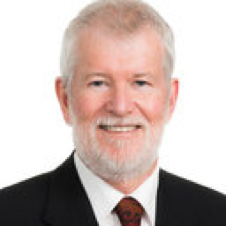
Dr Wendell Evans
Dr Wendell Evans was Head, Community Oral Health and Epidemiology at Sydney University until his recent retirement. In this role, he directed the Graduate Diploma and Master of Dental Science programs in Community Oral Health and Epidemiology. He is a past President of the IADR Australian and New Zealand Division, and past IADR Asia-Pacific Regional Board Member. Wendell Evans is a Co-chair of the Australia-New Zealand Chapter of the Alliance for a Cavity Free Future. Wendell has expertise in community water fluoridation, dental fluorosis, the prevention and management of dental caries, and oral health promotion. He led the development of the Caries Management System (CMS) protocols for adults and children/adolescents. These protocols deal with the primary prevention of caries and with non-invasive treatment to arrest early caries lesions and prevent them from progressing to cavities. The CMS was tested successfully in a group of very high risk patients, and then in a randomly controlled clinical trial of general dental practices funded by a National Health & Medical Research Council of Australia. This 7-year trial had three important outcomes: first, that patients attending the intervention practices needed 50% fewer restorative interventions compared with patients attending the control practices;
second, that preventive treatment for caries, according to the Caries Management System, is cost effective; and finally, that the dentists who delivered the CMS protocols derived professional satisfaction from this mode of practice as did their practice staff. Additionally, the patients themselves were extremely satisfied with their attendance at practices that focussed on caries prevention and non-invasive management of early caries lesions. Currently, Dr Wendell Evans is the lead author for the World Health Organization’s upcoming publication on ECC diagnosis and risk assessment.
1. Overview on Early Caries Prevention (10 March 2018; 11.15am - 1200pm)
Caries is caused by excessive exposure to free sugars which transforms the dental plaque biofilm into a pathogenic agent. Additionally, the plaque biofilm separates tooth surfaces from saliva thus limiting its remineralisation potential. The pathogenic event of caries is moderated by fluoride exposure. This presentation will review the population and home-care evidence that (1) restricting sugar exposure, (2) increasing fluoride exposure, and (3) control of plaque, significantly decreases caries risk. Caries primary prevention aims to reduce the risk of caries incidence, and caries secondary prevention aims to reduce the progression of early-stage non-cavitated lesions to late-stage cavitated lesions.
2. Caries Management System in Dental Practice (10 March 2018, Time: 2.00 – 3.00 pm)
The Caries Management System protocol is based on the fact that early-stage caries lesions are highly susceptible to non-surgical preventive management. Restorative intervention is unnecessary for patients on risk-specific management and monitoring schedules because (1) early caries lesions are readily identifiable, (2) they progress very slowly, and (3) offer a long window of opportunity (measured in years) during which to intervene non-surgically to bring about lesion arrest and remineralisation. Associated primary prevention brings caries into remission. Patients judged initially as high-risk may become low-risk in a short period. Caries management entails both patient and dentist-related inputs. Dentists are responsible (1) for early diagnosis and risk assessment, (2) to coach the toothbrushing skills of patients, (3) to empower patients to control their sugar exposure, (4) to provide risk-specific clinical applications of fluoride products and sealants, and (5) to monitor both clinical and patient-risk outcomes. Patients are responsible for adhering to (1) home-care recommendations on sugar exposure and toothbrushing performance and (2) the schedule of monitoring appointments.